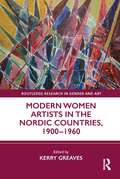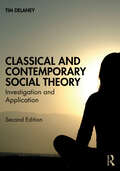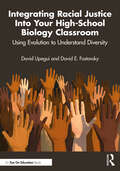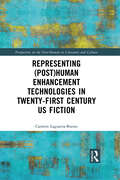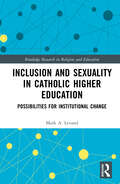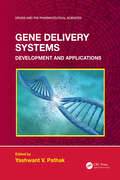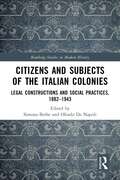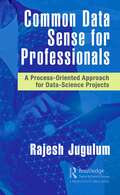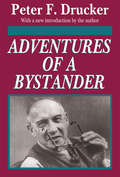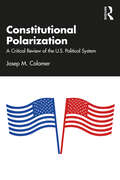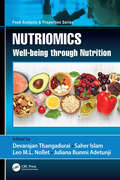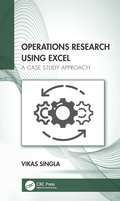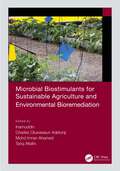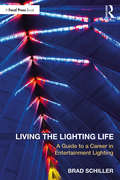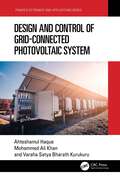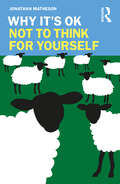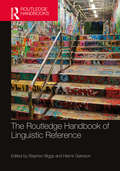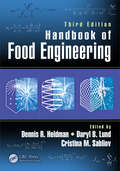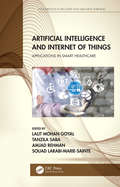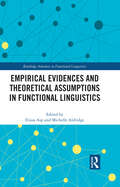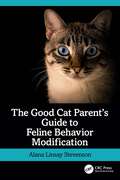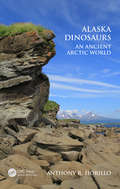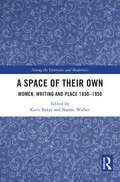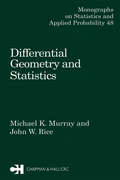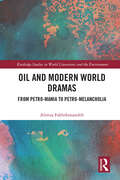- Table View
- List View
Modern Women Artists in the Nordic Countries, 1900–1960 (Routledge Research in Gender and Art)
by Kerry GreavesThis transnational volume examines innovative women artists who were from, or worked in, Denmark, Finland, Greenland, Iceland, Norway, Sápmi, and Sweden from the emergence of modernism until the feminist movement took shape in the 1960s.The book addresses the culturally specific conditions that shaped Nordic artists’ contributions, brings the latest methodological and feminist approaches to bear on Nordic art history, and engages a wide international audience through the contributors’ subject matter and analysis. Rather than introducing a new history of "rediscovered" women artists, the book is more concerned with understanding the mechanisms and structures that affected women artists and their work, while suggesting alternative ways of constructing women’s art histories. Artists covered include Else Alfelt, Pia Arke, Franciska Clausen, Jessie Kleemann, Hilma af Klint, Sonja Ferlov Mancoba, Greta Knutson, Aase Texmon Rygh, Hannah Ryggen, Júlíana Sveinsdóttir, Ellen Thesleff, and Astri Aasen.The target audience includes scholars working in art history, cultural studies, feminist studies, gender studies, curatorial studies, Nordic studies, postcolonial studies, and visual studies.
Classical and Contemporary Social Theory: Investigation and Application
by Tim DelaneyThe second edition of Classical and Contemporary Social Theory provides wraparound coverage of the classical social theorists and influential sociological schools of thought in the contemporary period.Explained carefully and clearly throughout, Tim Delaney reviews the key concepts and contributions from brilliant classical social thinkers and recent sociological thought, spanning over 500 years of source material. He weaves together profiles of leading theorists, thorough descriptions of major academic and intellectual perspectives, and discussion of prevailing themes of interest that have concerned theorists and sociologists throughout time and will likely continue to do so in the future. The book emphasizes methods of investigation and application in its overview of the field by challenging readers to think about problems critically and in relation to key sociological theories and to also apply their sociological understanding to real, everyday events.In this new edition, Delaney revisits the classical period and highlights the special contributions of American social theorists and their impact on the diversity of thought leading into the contemporary era. He attends to later schools of thought and weaves in important updates related to critical race theory and globalization. With updated context and further applications, the second edition of Classical and Contemporary Social Theory is a perfect addition to combined courses in social theory.
Integrating Racial Justice Into Your High-School Biology Classroom: Using Evolution to Understand Diversity
by David Upegui David E. FastovskyIn this guide, educators and authors David Upegui and David E. Fastovsky offer a pedagogical prescription for how you can integrate the study of racial justice with evolutionary biology in your existing high-school biology curriculum.Designed as a practical manual for teaching, the chapters focus on teaching concepts of equity through evolutionary biology modules, a cornerstone for building students’ scientific understanding of biotic diversity. The book provides pedagogical components alongside historical and scientific components, with contextual chapters that give teachers the background knowledge to understand the historical relationship between science and racism for topics such as natural selection, social justice, and American slavery and colonization. Ready-to-use lesson plans are situated in a historical and theoretical context of science as it relates to racial oppression, and demonstrate how rigorous science education can lead to your students’ liberation and personal empowerment despite the historically problematic history of some applications of science. These lesson plans and classroom exercises are presented in a way that introduces the timely extra dimension of anti-racism into the existing biology curricula without significantly increasing teaching loads. The contextual material provided allows the lessons to be implemented across a variety of classrooms regardless of initial familiarity with DEI.Ideal for secondary biology teachers and their students, particularly in grades 10-12, this book synthesizes timely ideas for high-school educators, harnessing the power of rigorous science to combat marginalization. Lessons and activities have been classroom-tested and are aligned with three different standards: Next Generation Science Standards (NGSS); College board (AP Biology); Vision and Change; and use the 5E format.
Representing (Perspectives on the Non-Human in Literature and Culture)
by Carmen Laguarta-BuenoThis work studies three twenty-first century novels by Richard Powers, Dave Eggers and Don DeLillo as representative of a new trend of US fiction concerned with the topic of the technological augmentation of the human condition. The different chapters provide, from the double perspective of the optimistic transhumanist philosophy and the more balanced approach of critical posthumanism, an overview of the narrative strategies used by the writers to explore the possibilities that biotechnology, digital technologies and cryonics open up to transcend our human limitations, while also warning their readers of their most nefarious consequences. Ultimately, the book puts forward the claim that even if the writers approach the subject from a variety of perspectives and using different narrative styles and techniques, they all share a critical posthumanist fear that an unrestrained and unquestioned use of technology for enhancement purposes may bring about disembodiment and dehumanization.
Inclusion and Sexuality in Catholic Higher Education: Possibilities for Institutional Change (Routledge Research in Religion and Education)
by Mark A. LevandDrawing on research conducted at 17 Catholic universities in the United States, making it the largest study of its kind, this volume explores effective practice in improving institutional policy relating to issues of sexuality.The text calls attention to campus cultures of fear, shame, or denial around sexuality and highlights possible points of institutional resistance to changes in policy. Discussing topics such as sexual identity, sexuality education in the curriculum, Title IX, employee termination, and morality clauses, the book shows how staff and faculty are crucial in effecting change across Catholic campuses, providing valuable insight into the “unspoken rules” around sexuality within the shadow culture at Catholic institutions. Moreover, the text illustrates how institutions can maintain fidelity to Church teachings and even embrace notions of human dignity, solidarity, and the common good to achieve sexual inclusivity.A unique study demonstrating how Catholic teaching can help support inclusive change around issues of sexuality and gender in higher education, it ultimately puts forward a practical framework for effecting change and improving student and staff support structures in Catholic institutions. It will thus appeal to researchers and academics working in the fields of Higher Education Management, Gender and Sexuality in Education, Religion, Gender and Sexuality, and the Sociology of Religion.
Gene Delivery Systems: Development and Applications (ISSN)
by Yashwant V. PathakThis unique volume in our Drugs and Pharmaceutical Sciences series covers the development of gene therapy today, the technology involved, clinical applications of siRNA, non-viral vector-based mRNA delivery using nanotechnology, and RNA based vaccines for treating the infectious diseases. It also presents the current application of the CRISPR/Cas9 gene-editing technique which has revolutionized genome editing and which was awarded the 2020 Nobel Prize in Chemistry. Several new drug delivery systems are explored for the applications of gene therapy. These are found to be useful in treating chronic illnesses, including cancer and infectious diseases. Key Features: Overview of the development of gene therapy Provides the most up to date information on the development of gene therapy, from the technology involved to gene correction and genome editing Presents CRISPR gene therapy recent trends and applications Discusses siRNA, mRNA, and DNA plasmids
Citizens and Subjects of the Italian Colonies: Legal Constructions and Social Practices, 1882–1943 (Routledge Studies in Modern History)
by Simona BerheThis is the first book on Italian colonialism that specifically deals with the question of citizenship/subjecthood. Such a topic is crucial for understanding both Italian imperial rule and the complex dynamics of the different colonial societies where several actors, like notables, political leaders, minorities, etc., were involved.The chapters gathered in the book constitute an unprecedented account of a heterogeneous geographical area. The cases of Eritrea, Libya, Dodecanese, Ethiopia, and Albania confirm that citizenship and subjecthood in the colonial context were ductile political tools, which were structured according to the orientations of the Metropole and the challenges that came from the colonial societies, often swinging between submission, cooptation to the colonial power, and resistance.On one hand, the book offers an account of the different policies of citizenship implemented in the Italian colonies, in particular the construction of gradated forms of citizenship, the repression and expulsion of dissidents, the systems of endearment of local people and cooptation of the elites, and the racialization of legal status. On the other, it deals with the various answers coming from the local populations in terms of resistance, negotiation, and construction of social identity.
Common Data Sense for Professionals: A Process-Oriented Approach for Data-Science Projects
by Rajesh JugulumData is an intrinsic part of our daily lives. Everything we do is a data point. Many of these data points are recorded with the intent to help us lead more efficient lives. We have apps that track our workouts, sleep, food intake, and personal finance. We use the data to make changes to our lives based on goals we have set for ourselves. Businesses use vast collections of data to determine strategy and marketing. Data scientists take data, analyze it, and create models to help solve problems. You may have heard of companies having data management teams or chief information officers (CIOs) or chief data officers (CDOs), etc. They are all people who work with data, but their function is more related to vetting data and preparing it for use by data scientists. The jump from personal data usage for self-betterment to mass data analysis for business process improvement often feels bigger to us than it is. In turn, we often think big data analysis requires tools held only by advanced degree holders. Although advanced degrees are certainly valuable, this book illustrates how it is not a requirement to adequately run a data science project. Because we are all already data users, with some simple strategies and exposure to basic analytical software programs, anyone who has the proper tools and determination can solve data science problems. The process presented in this book will help empower individuals to work on and solve data-related challenges. The goal of this book is to provide a step-by-step guide to the data science process so that you can feel confident in leading your own data science project. To aid with clarity and understanding, the author presents a fictional restaurant chain to use as a case study, illustrating how the various topics discussed can be applied. Essentially, this book helps traditional businesspeople solve data-related problems on their own without any hesitation or fear. The powerful methods are presented in the form of conversations, examples, and case studies. The conversational style is engaging and provides clarity.
Adventures of a Bystander
by Peter DruckerPeter Drucker's lively and thoughtful memoirs are now available in paperback with a new introduction by the author. He writes with wit and spirit about people he has encountered in a long and varied life, including Sigmund Freud, Henry Luce, Alfred Sloan, John L. Lewis, and Marshall McLuhan. After beginning with his childhood in Vienna during and after World War I, Drucker moves on to Europe in the 1920s and early 1930s, describing the imminent doom posed by Hitler and the Nazis. He then goes on to describe London during the 1930s, America during the New Deal era, the World War II years, and beyond.According to John Brooks of The New York Times Book Review, "Peter Drucker is at a corner cafe, delightfully regaling anyone who will listen with tales of what must be one of the more varied—and for a practitioner of such a narrow skill as that of management counseling, astonishing—of contemporary professional lives." Dorothy Rabinowitz of the Washington Post writes, "The famous are here as well as the infamous.... All are the beneficiaries, for better or for worse, of Drucker's unerring eye for psychological detail, his remorseless curiosity, and his imaginative sympathy.... Drucker's book appears in a stroke to have restored the art of the memoir and of the essay."Adventures of a Bystander reflects Drucker's vitality, infinite curiosity, and interest in people, ideas, and the forces behind them. His book is a personal and informal account of the rich life of an independent man of letters, a life that spans eight decades and two continents. It will be of interest to scholars and professionals in the business world, historians, sociologists, and admirers of Peter Drucker.
Constitutional Polarization: A Critical Review of the U.S. Political System
by Josep M. ColomerIn this book, Josep M. Colomer argues, against much conventional wisdom, that political polarization is embedded in the constitutional design.The book puts forth that sustained conflict and institutional gridlock are not mainly questions of character, personalities, or determined by socioeconomic or cultural inequalities. They are, above all, the result of the formula of separation of powers between the Presidency and Congress, which, together with a system of only two parties, fosters adversarial politics and polarization. Colomer contends that in the past, bipartisan cooperation and domestic peace flourished only under a foreign existential threat, such as during the Cold War. Once such a threat vanished, unsettled issues and new social concerns have broadened the public agenda and triggered again animosity and conflict.Constitutional Polarization offers innovative and relevant insights in political science to a broad readership without technical or academic jargon. It will be of high interest for those reader attentive to current affairs, as well as for public officers, journalists, pundits, and those in the study of political science, where it can also become a staple for courses in American Politics.
Nutriomics: Well-being through Nutrition (ISSN)
by Devarajan Thangadurai Saher Islam Leo M.L. Nollet Juliana Bunmi AdetunjiImplementation of robust omics technologies enables integrative and holistic interrogation related to nutrition by labeling biomarkers to empirically assess the dietary intake. Nutriomics: Well-being through Nutrition aims to enhance scientific evidence based on omics technologies and effectiveness of nutrition guidelines to promote well-being. It provides deep understanding towards nutrients and genotype effects on disease and health status. It also unveils the nutrient–health relation at the population and individual scale. This book helps to design the precise nutritional recommendations for prevention or treatment of nutrition-related syndromes.Nutriomics: Well-being through Nutrition focuses on: The impact of molecular approaches to revolutionize nutrition research for human well-being Various biomarkers for bioactive ingredient analysis in nutritional intervention research Potential of transcriptomic, genomic, proteomic, metabolomic, and epigenomic tools for nutrition care practices Recent updates on applications of omics technologies towards personalized nutrition Providing comprehensive reviews about omics technologies in nutritional science, Nutriomics: Well-being through Nutrition serves as an advanced source of reference for food developers, nutritionists, and dietary researchers to investigate and evaluate nutriomics tools for development of customized nutrition and food safety. It is also a useful source for clinicians and food industry officials who require intense knowledge about emerging dietary-related tools to revolutionize the nutrition industry.This is a volume in the Food Analysis and Properties series, a series designed to provide state-of-art coverage on topics to the understanding of physical, chemical, and functional properties of foods.
Operations Research Using Excel: A Case Study Approach
by Vikas SinglaThe field of operations research provides a scientific approach to managerial decision making. In a contemporary, hypercompetitive ever-changing business world, a manager needs quantitative and factual ways of solving problems related to optimal allocation of resources, profit/loss, maximization/minimization etc. In this endeavor, the subject of doing research on how to manage and make operations efficient is termed as Operations Research. The reference text provides conceptual and analytical knowledge for various operations research techniques. Readers, especially students of this subject, are skeptic in dealing with the subject because of its emphasis on mathematics. However, this book has tried to remove such doubts by focusing on the application part of OR techniques with minimal usage of mathematics. The attempt was to make students comfortable with some complicated topics of the subject. It covers important concepts including sensitivity analysis, duality theory, transportation solution method, Hungarian algorithm, program evaluation and review technique and periodic review system. Aimed at senior undergraduate and graduate students in the fields of mechanical engineering, civil engineering, industrial engineering and production engineering, this book:• Discusses extensive use of Microsoft Excel spreadsheets and formulas in solving operations research problems• Provides case studies and unsolved exercises at the end of each chapter• Covers industrial applications of various operations research techniques in a comprehensive manner• Discusses creating spreadsheets and using different Excel formulas in an easy-to-understand manner• Covers problem-solving procedures for techniques including linear programming, transportation model and game theory
Microbial Biostimulants for Sustainable Agriculture and Environmental Bioremediation
by InamuddinToday, the agriculture industry is confronted with simultaneous issues of how to fully embrace mass production of safer food in terms of both quality and quantity. Most industries are concerned with avoiding significant levels of soil pollution and environmental threats as a result of the excessive and harmful use of synthetic products on crops. Therefore, there is a need to adopt sustainable technological innovations that can ensure the sustainability of agricultural production systems.Microbial Biostimulants for Sustainable Agriculture and Environmental Bioremediation discusses the benefits, challenges, and practical applications of eco-friendly biotechnological techniques using biostimulants derived from beneficial microorganisms. The chapters cover the use of these organisms to increase crop production, enhance soil fertility and maintain soil health, create crop and plant tolerance to different abiotic stressors, release required nutrients to the soil, increase resistance to plant pathogens/pests, improve nutrient use efficiency of crops, and rejuvenate polluted environments.FEATURES Explores the physiological, morpho-anatomical, and biochemical molecular plant rejoinders involved in stimulating crop productivity Provides information on the physiological, cellular, and molecular modes of action underlying microbial biostimulant interfaces Summarizes methods and approaches for executing microbial stimulant technology Outlines numerous environmental management and remediation strategies This book is an ideal resource for researchers, engineers, and academics working in soil science, crop science, water remediation, microbiology, and biotechnology.
Living the Lighting Life: A Guide to a Career in Entertainment Lighting
by Brad SchillerLiving the Lighting Life provides practical tools and advice for a successful career in entertainment lighting. This easy-to-navigate guide offers real-world examples and documentation from the author and key industry experts, giving readers a comprehensive overview of the lighting life. The book provides insight on: Different job opportunities in the entertainment lighting industry; Business procedures, contracts, time sheets, and invoices; Tips on self-promotion, networking, and continual learning; The lighting lifestyle, healthy living, and work-related travel; Maintaining and developing creativity to provide innovative lighting and solutions. With insightful interviews from industry veterans, Living the Lighting Life is a key navigational resource for anyone considering a career in entertainment lighting or just starting out.
Design and Control of Grid-Connected Photovoltaic System (ISSN)
by Ahteshamul Haque Mohammed Ali Khan V S KurukuruThe current model for electricity generation and distribution is dominated by centralized power plants which are typically associated with combustion (coal, oil, and natural gas) or nuclear generation units. These power models require distribution from the center to outlying consumers and have many disadvantages concerning the electric utilities, transmission and distribution, and greenhouse gas emissions. This resulted in the modelling and development of cleaner renewable power generation with alternative sources such as photovoltaic (PV), wind, and other sources. Further, due to matured PV technology, constant drop-in installation cost, greenhouse emissions reductions, energy efficiency, reduced transmission and distribution investments, minimization of electric losses, and network support, the development of PV systems is proliferating. In view of this development, this book provides an idea for setting up the PV plant from initial study of the site to plan sizing. Once the first planning is covered, the book focuses on the modeling aspects of power electronics converter and control elements associated with it keeping the operating standards specified for the development of distributed generation systems in check.This book will be useful for industrial professionals and researchers who are working toward modeling of PV plants, and their control in grid connected operation. All the necessary information related to these fields is available in the book.
Why It's OK Not to Think for Yourself (Why It's OK)
by Jonathan MathesonWe tend to applaud those who think for themselves: the ever-curious student, for example, or the grownup who does their own research. Even as we’re applauding, however, we ourselves often don’t think for ourselves. This book argues that’s completely OK.In fact, it’s often best just to take other folks’ word for it, allowing them to do the hard work of gathering and evaluating the relevant evidence. In making this argument, philosopher Jonathan Matheson shows how 'expert testimony' and 'the wisdom of crowds' are tested and provides convincing ideas that make it rational to believe something simply because other people believe it. Matheson then takes on philosophy’s best arguments against his thesis, including the idea that non-self-thinkers are free-riding on the work of others, Socrates’ claim that 'the unexamined life isn’t worth living,' and that outsourcing your intellectual labor makes you vulnerable to errors and manipulation. Matheson shows how these claims and others ultimately fail -- and that when it comes to thinking, we often need not be sheepish about being sheep.Key Features Discusses the idea of not thinking for yourself in the context of contemporary issues like climate change and vaccinations Engages in numerous contemporary debates in social epistemology Examines what can be valuable about thinking for yourself and argues that these are insufficient to require you to do so Outlines the key, practical takeaways from the argument in an epilogue
The Routledge Handbook of Linguistic Reference (Routledge Handbooks in Philosophy)
by Stephen BiggsThis Handbook offers students and more advanced readers a valuable resource for understanding linguistic reference; the relation between an expression (word, phrase, sentence) and what that expression is about. The volume’s forty-one original chapters, written by many of today’s leading philosophers of language, are organized into ten parts:I Early Descriptive TheoriesII Causal Theories of ReferenceIII Causal Theories and Cognitive SignificanceIV Alternate TheoriesV Two-Dimensional SemanticsVI Natural Kind Terms and RigidityVII The Empty CaseVIII Singular (De Re) ThoughtsIX IndexicalsX Epistemology of Reference Contributions consider what kinds of expressions actually refer (names, general terms, indexicals, empty terms, sentences), what referring expressions refer to, what makes an expression refer to whatever it does, connections between meaning and reference, and how we know facts about reference. Many contributions also develop connections between linguistic reference and issues in metaphysics, epistemology, philosophy of mind, and philosophy of science.
Handbook of Food Engineering
by Edited by Dennis R. Heldman Daryl B. Lund Cristina M. SabliovAs the complexity of the food supply system increases, the focus on processes used to convert raw food materials and ingredients into consumer food products becomes more important. The Handbook of Food Engineering, Third Edition, continues to provide students and food engineering professionals with the latest information needed to improve the efficiency of the food supply system.As with the previous editions, this book contains the latest information on the thermophysical properties of foods and kinetic constants needed to estimate changes in key components of foods during manufacturing and distribution. Illustrations are used to demonstrate the applications of the information to process design. Researchers should be able to use the information to pursue new directions in process development and design, and to identify future directions for research on the physical properties of foods and kinetics of changes in the food throughout the supply system.Features Covers basic concepts of transport and storage of liquids and solids, heating and cooling of foods, and food ingredients New chapter covers nanoscale science in food systems Includes chapters on mass transfer in foods and membrane processes for liquid concentration and other applications Discusses specific unit operations on freezing, concentration, dehydration, thermal processing, and extrusion The first four chapters of the Third Edition focus primarily on the properties of foods and food ingredients with a new chapter on nanoscale applications in foods. Each of the eleven chapters that follow has a focus on one of the more traditional unit operations used throughout the food supply system. Major revisions and/or updates have been incorporated into chapters on heating and cooling processes, membrane processes, extrusion processes, and cleaning operations.
Artificial Intelligence and Internet of Things: Applications in Smart Healthcare (Innovations in Big Data and Machine Learning)
by Lalit Mohan GoyalThis book reveals the applications of AI and IoT in smart healthcare and medical systems. It provides core principles, algorithms, protocols, emerging trends, security problems, and the latest e-healthcare services findings.The book also provides case studies and discusses how AI and IoT applications such as wireless devices, sensors, and deep learning could play a major role in assisting patients, doctors, and pharmaceutical staff. It focuses on how to use AI and IoT to keep patients safe and healthy and, at the same time, empower physicians to deliver superlative care.This book is written for researchers and practitioners working in the information technology, computer science, and medical equipment manufacturing industry for products and services having basic- and high-level AI and IoT applications. The book is also a useful guide for academic researchers and students.
Empirical Evidences and Theoretical Assumptions in Functional Linguistics (Routledge Advances in Functional Linguistics)
by Elissa AspThis collection explores the relationships between theory and evidences in functional linguistics, bringing together perspectives from both established and emerging scholars. The volume begins by establishing theoretical common ground for functional approaches to language, critically discussing empirical inquiry in functional linguistics and the challenges and opportunities of using new technologies in linguistic investigations. Building on this foundation, the second part of the volume explores the challenges involved in using different data sources as evidence for theorizing language and linguistic processes, drawing on work on lexical cohesion in language variation, neuroimaging and neuropathological data, and keystroke logging and eye-tracking. The final section of the volume examines the ways in which evidences from a wide range of data sources can offer new perspectives toward challenging established theoretical claims, employing empirical evidences from corpus linguistic analysis, keystroke logging, and multimodal communication. This pioneering collection synthesizes perspectives and addresses fundamental questions in the investigation of the relationships between theory and evidences in functional linguistics and will be of particular interest to researchers working in the field, as well as linguists working in experimental and interdisciplinary approaches which seek to bridge this gap.
The Good Cat Parent’s Guide to Feline Behavior Modification
by Alana Linsay StevensonCats are cuddly and adorable, but they are often misunderstood. Sadly, many cats are relinquished to shelters or rehomed due to normal behaviors that are incorrectly treated or mishandled. In this book, Elite Fear-Free and Low-Stress Handling Certified author Alana Linsay Stevenson empowers cat parents and teaches them how to address and modify challenging feline behavior.You will begin by learning basic kitten care and feline developmental stages; how cats differ behaviorally from group animals, such as dogs and people; feline body language; and how cats handle stress. Alana provides concise instruction on how to gently handle cats: how to pick up and carry them, acclimate them to carriers, the use of towels, alternatives to scruffing, and how our body language affects cats. Packed with photographs for visual reference, this book offers clear guidelines and easily implementable strategies for resolving feline behavioral problems, such as: failure to use the litter box play aggression petting aggression inter-cat aggression furniture scratching jumping on counters obsessing about food night wailing fear of people aggression to strangers The content is organized by topic for easy access to information, as you need it.The Good Cat Parent’s Guide to Feline Behavior Modification is for anyone who likes cats and wants to learn more about them. Whether you are a veterinary professional, a volunteer or shelter worker who regularly handles stressed cats, or a cat parent who simply wants to understand your cat, you will find helpful and useful information at your fingertips to give cats a better quality of life. No cat parent should be without this book!
Alaska Dinosaurs: An Ancient Arctic World
by Anthony R. FiorilloAnthony Fiorillo has been exploring the Arctic since 1998. For him, like many others, the Arctic holds the romance of uncharted territory, extreme conditions, and the inevitable epic challenges that arise. For Fiorillo, however, the Arctic also holds the secrets of the history of life on Earth, and its fossils bring him back field season after field season in pursuit of improving human understanding of ancient history. His studies of the rocks and fossils of the Arctic shed light on a world that once was, and provide insight into what might be.
A Space of Their Own: Women, Writing and Place 1850-1950 (Among the Victorians and Modernists)
by Katie Baker and Naomi WalkerThis collection explores how nineteenth and twentieth-century women writers incorporated the idea of ‘place’ into their writing. Whether writing from a specific location or focusing upon a particular geographical or imaginary place, women writers working between 1850 and 1950 valued ‘a space of their own’ in which to work. The period on which this collection focuses straddles two main areas of study, nineteenth century writing and early twentieth century/modernist writing, so it enables discussion of how ideas of space progressed alongside changes in styles of writing. It looks to the many ways women writers explored concepts of space and place and how they expressed these through their writings, for example how they interpreted both urban and rural landscapes and how they presented domestic spaces. A Space of Their Own will be of interest to those studying Victorian literature and modernist works as it covers a period of immense change for women’s rights in society. It is also not limited to just one type or definition of ‘space’. Therefore, it may also be of interest to academics outside of literature – for example, in gender studies, cultural geography, place writing and digital humanities.
Differential Geometry and Statistics (ISSN)
by M.K. MurraySeveral years ago our statistical friends and relations introduced us to the work of Amari and Barndorff-Nielsen on applications of differential geometry to statistics. This book has arisen because we believe that there is a deep relationship between statistics and differential geometry and moreoever that this relationship uses parts of differential geometry, particularly its 'higher-order' aspects not readily accessible to a statistical audience from the existing literature. It is, in part, a long reply to the frequent requests we have had for references on differential geometry! While we have not gone beyond the path-breaking work of Amari and Barndorff- Nielsen in the realm of applications, our book gives some new explanations of their ideas from a first principles point of view as far as geometry is concerned. In particular it seeks to explain why geometry should enter into parametric statistics, and how the theory of asymptotic expansions involves a form of higher-order differential geometry. The first chapter of the book explores exponential families as flat geometries. Indeed the whole notion of using log-likelihoods amounts to exploiting a particular form of flat space known as an affine geometry, in which straight lines and planes make sense, but lengths and angles are absent. We use these geometric ideas to introduce the notion of the second fundamental form of a family whose vanishing characterises precisely the exponential families.
Oil and Modern World Dramas: From Petro-Mania to Petro-Melancholia (Routledge Studies in World Literatures and the Environment)
by Alireza FakhrkonandehThe first to focus on the (re-)presentations of oil in dramatic literature, theatre, and performance, Oil and Modern World Dramas is a pioneering volume in the emerging field of Oil Literatures and Cultures, and the more established field of World Literatures. Through close analysis, Fakhrkonandeh demonstrates how these dramatic works depict oil, both in its perceived nature and character, as an overdetermined matter/sign/object: a symbol (of freedom, autonomy, speed, wealth, modernity, enlightenment), a commodity, a social-cultural agent, a social relation, and a hyper-object. This book is also distinguished by its innovative and critically manifold conceptual framework, positing the petro-literatures and petro-cultures an inextricable part of a global network. Oil and Modern World Dramas not only demonstrates how the chosen works of petro-drama manifest these concepts in their social-political vision, aesthetics and historical-ontological dynamics, but also reveals how they deploy such assemblage-based approaches both as a cartographical means and aesthetic method for exposing the systemic (Capitalocenic) nature of petro-capitalist exploitation, and as means of proposing ways of resistance and producing alternative modes of subjectivity, community, relationality, and economy.
